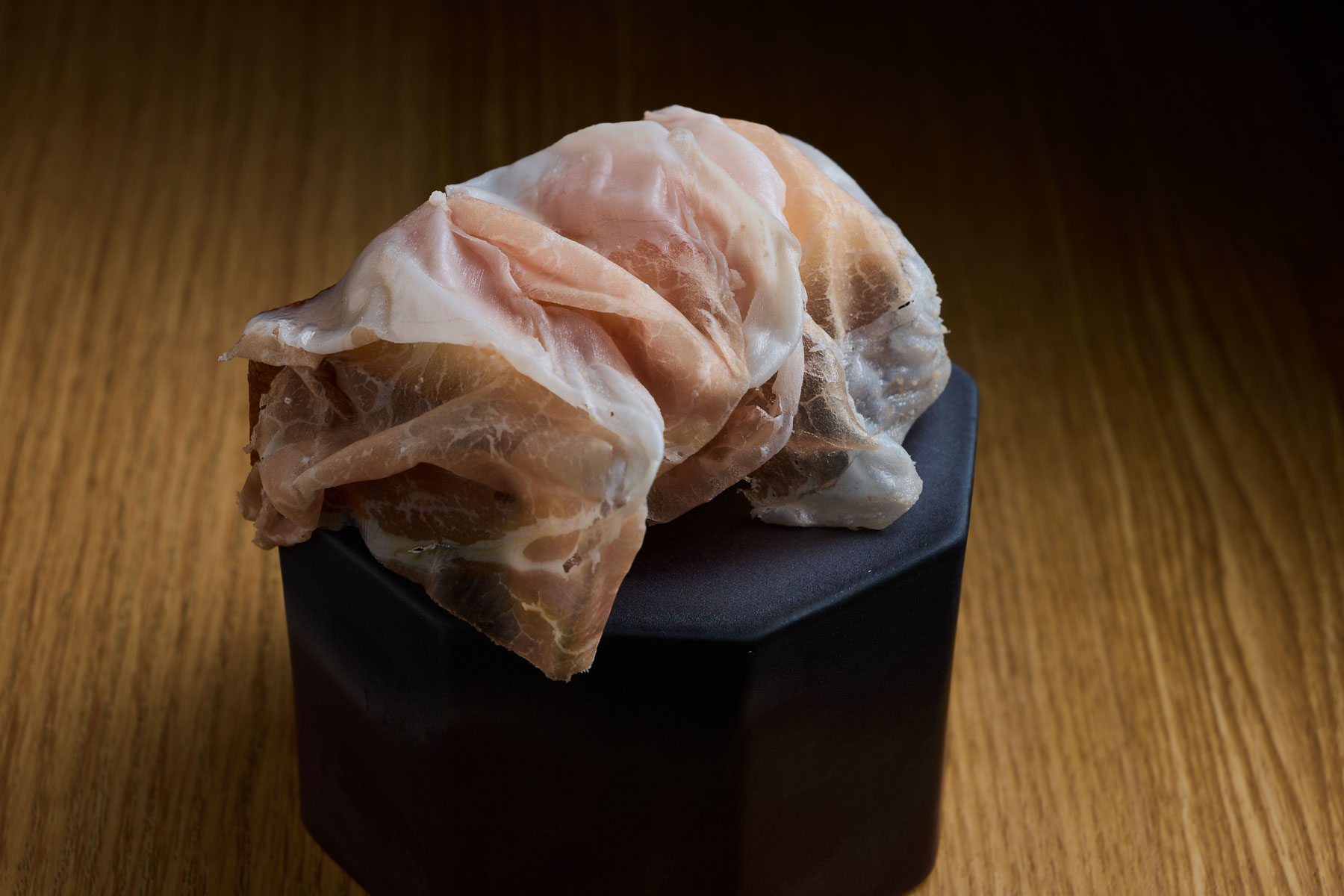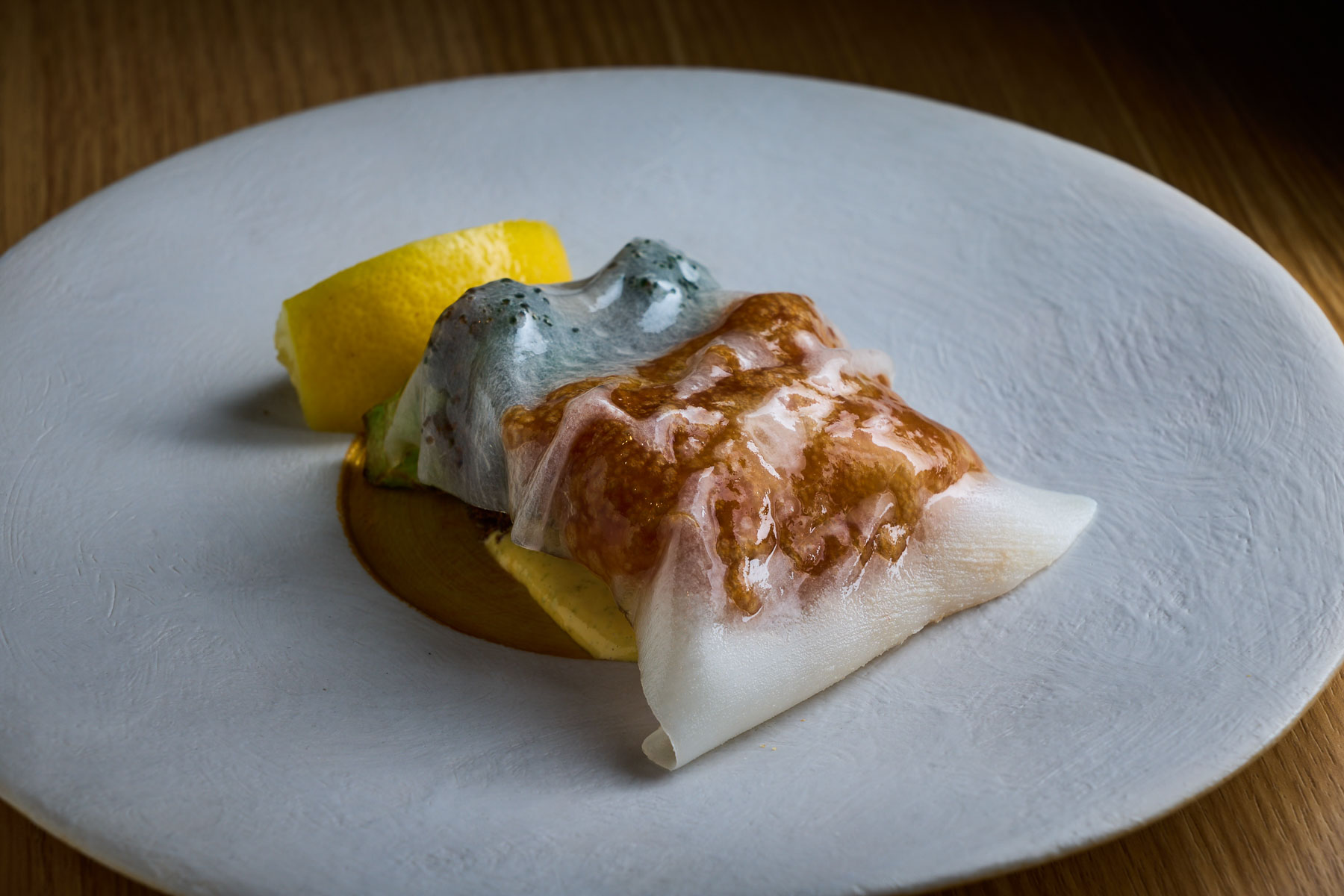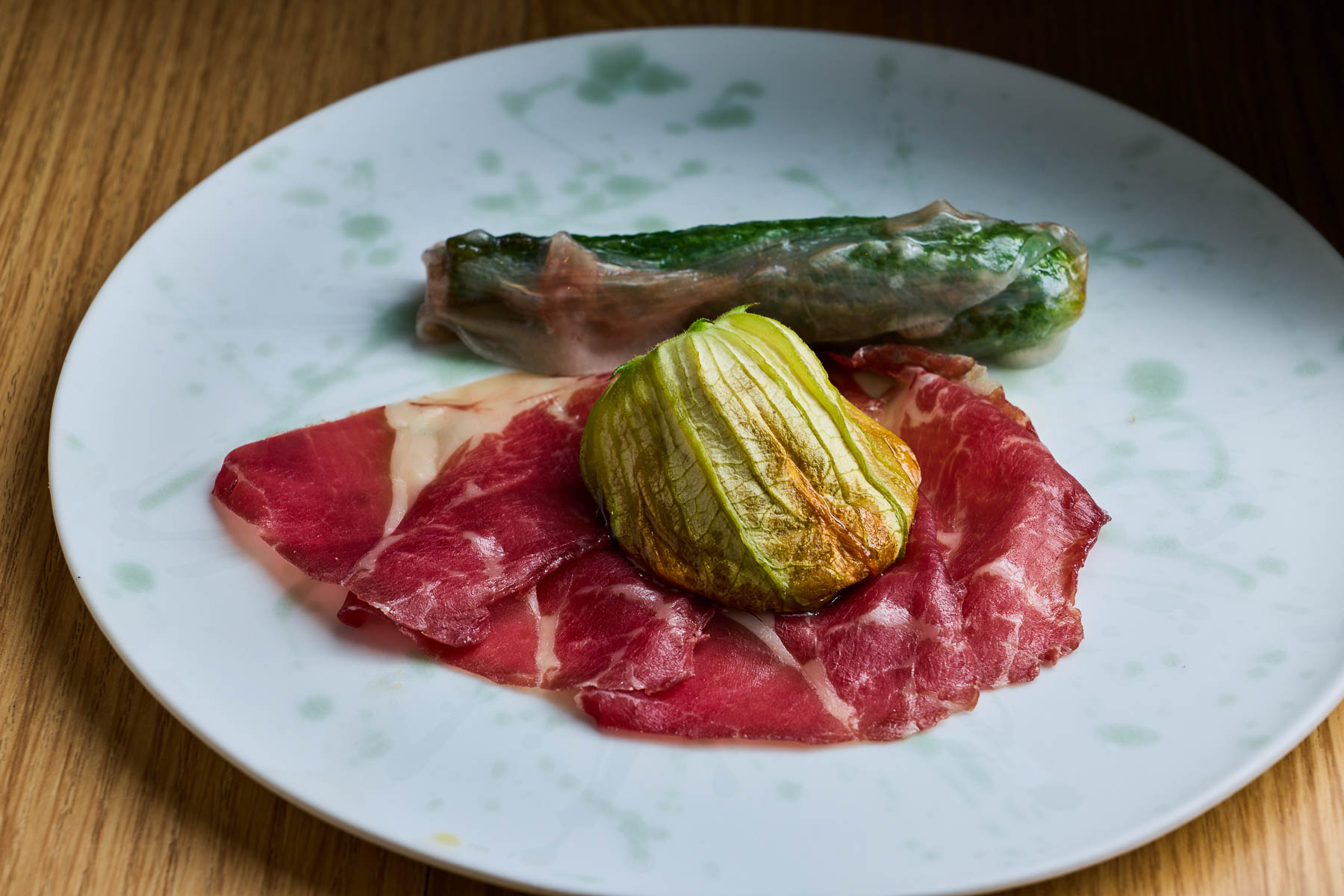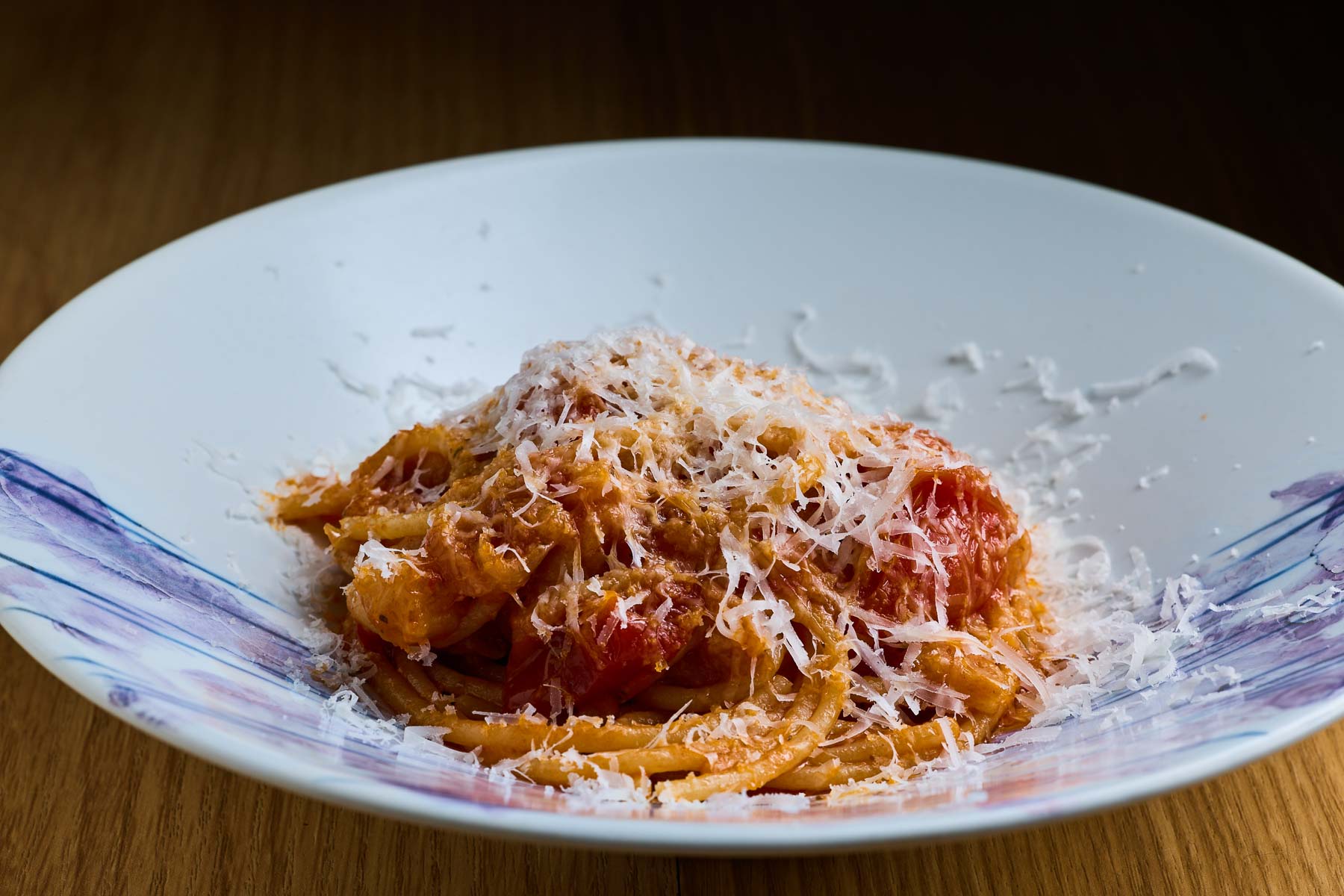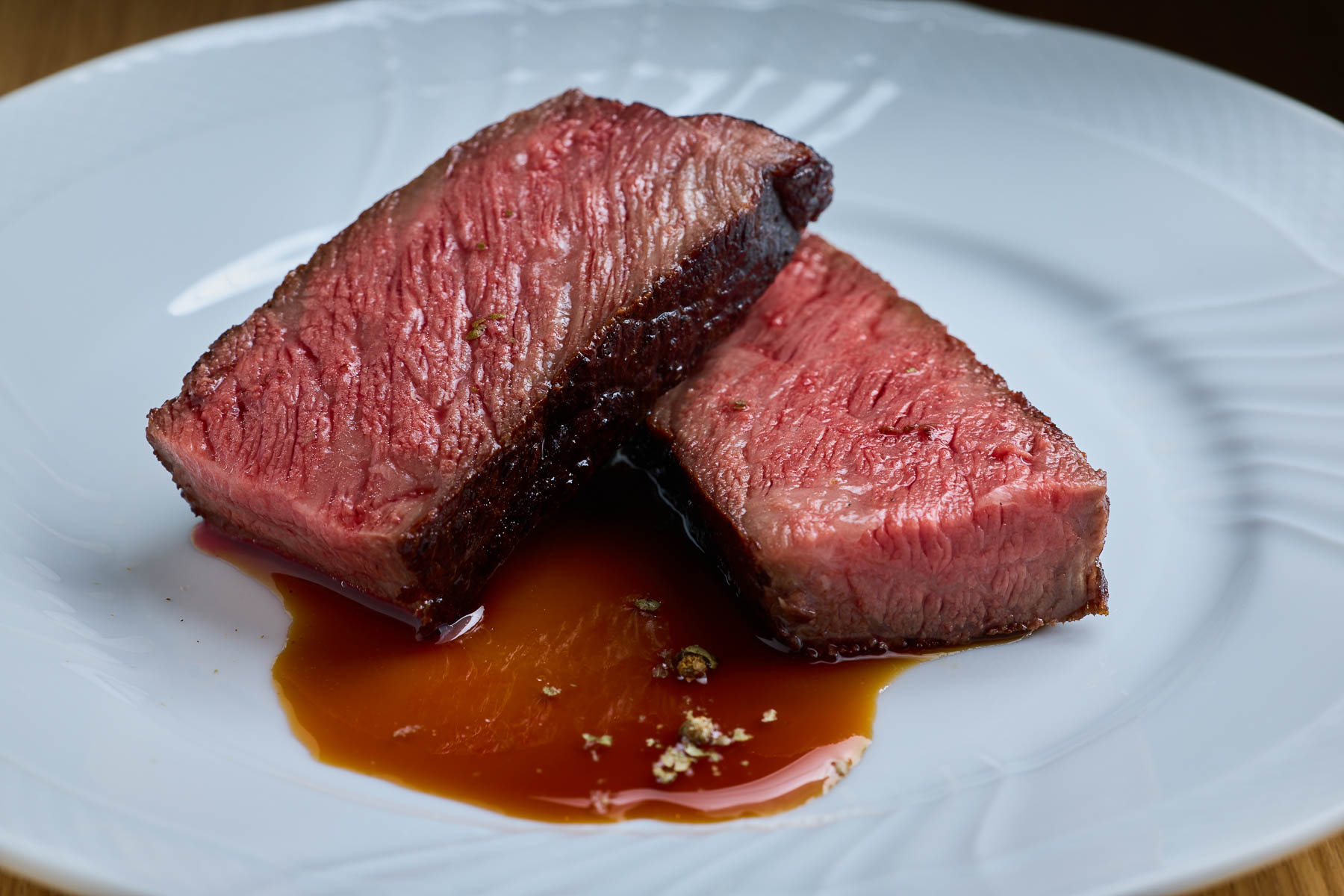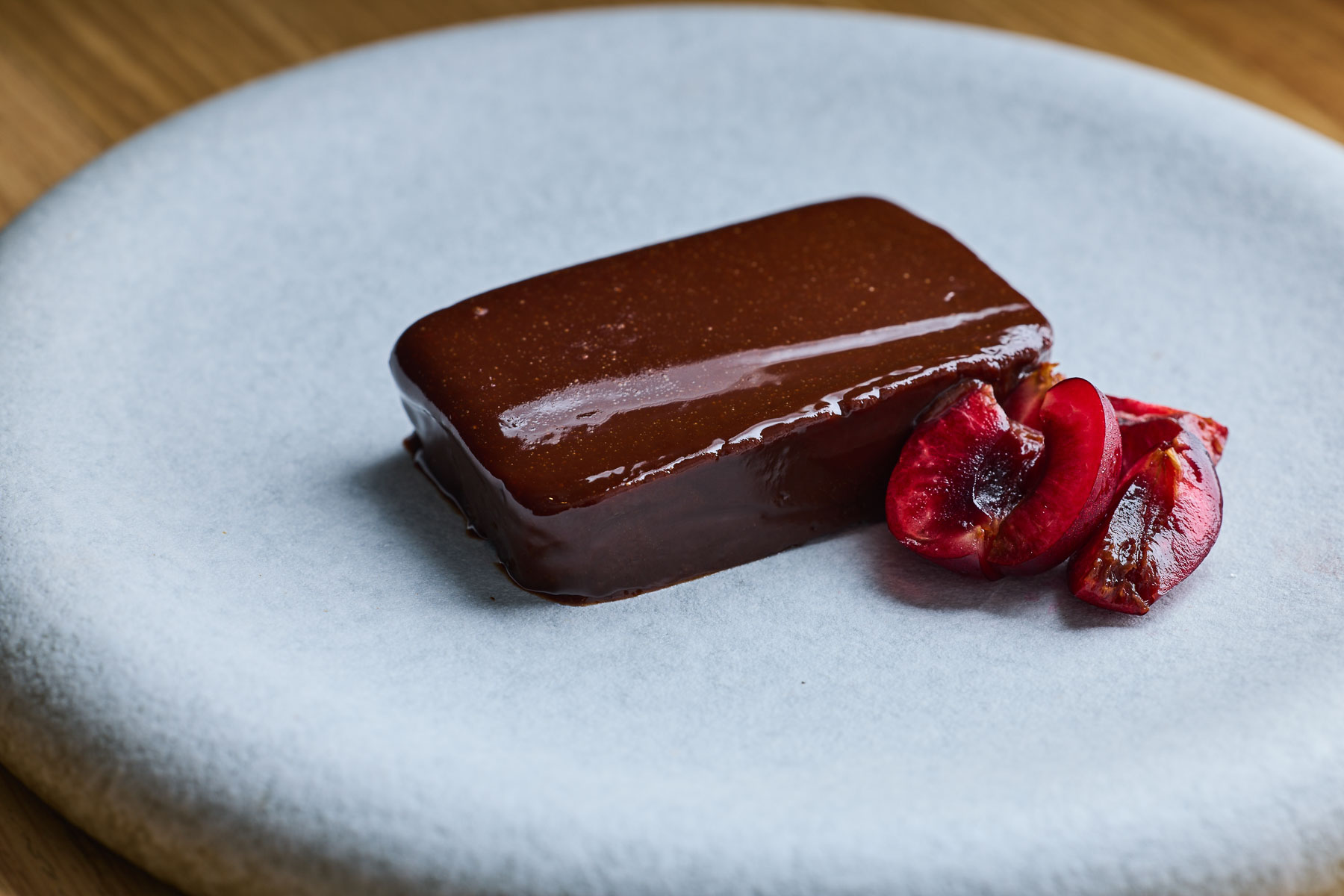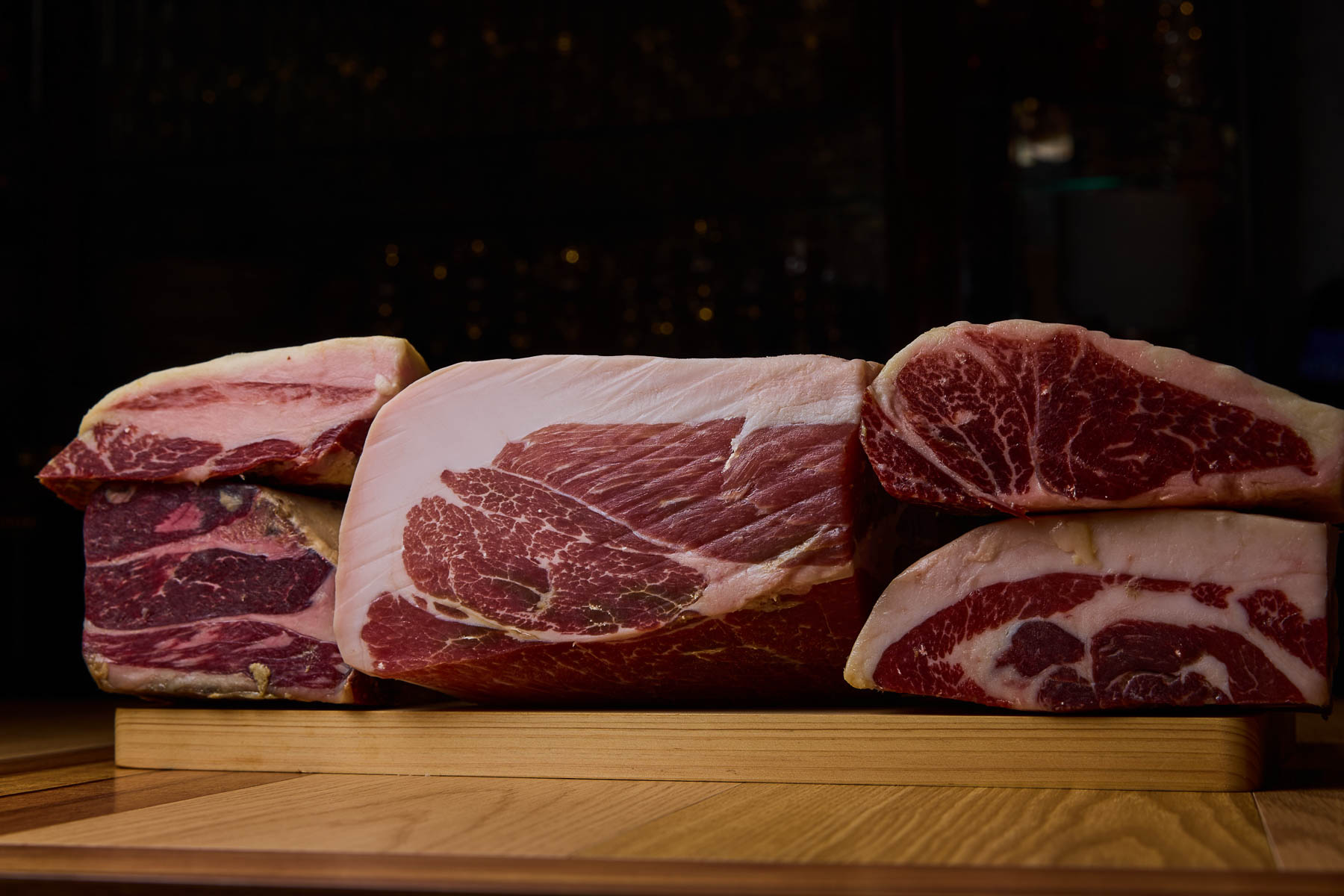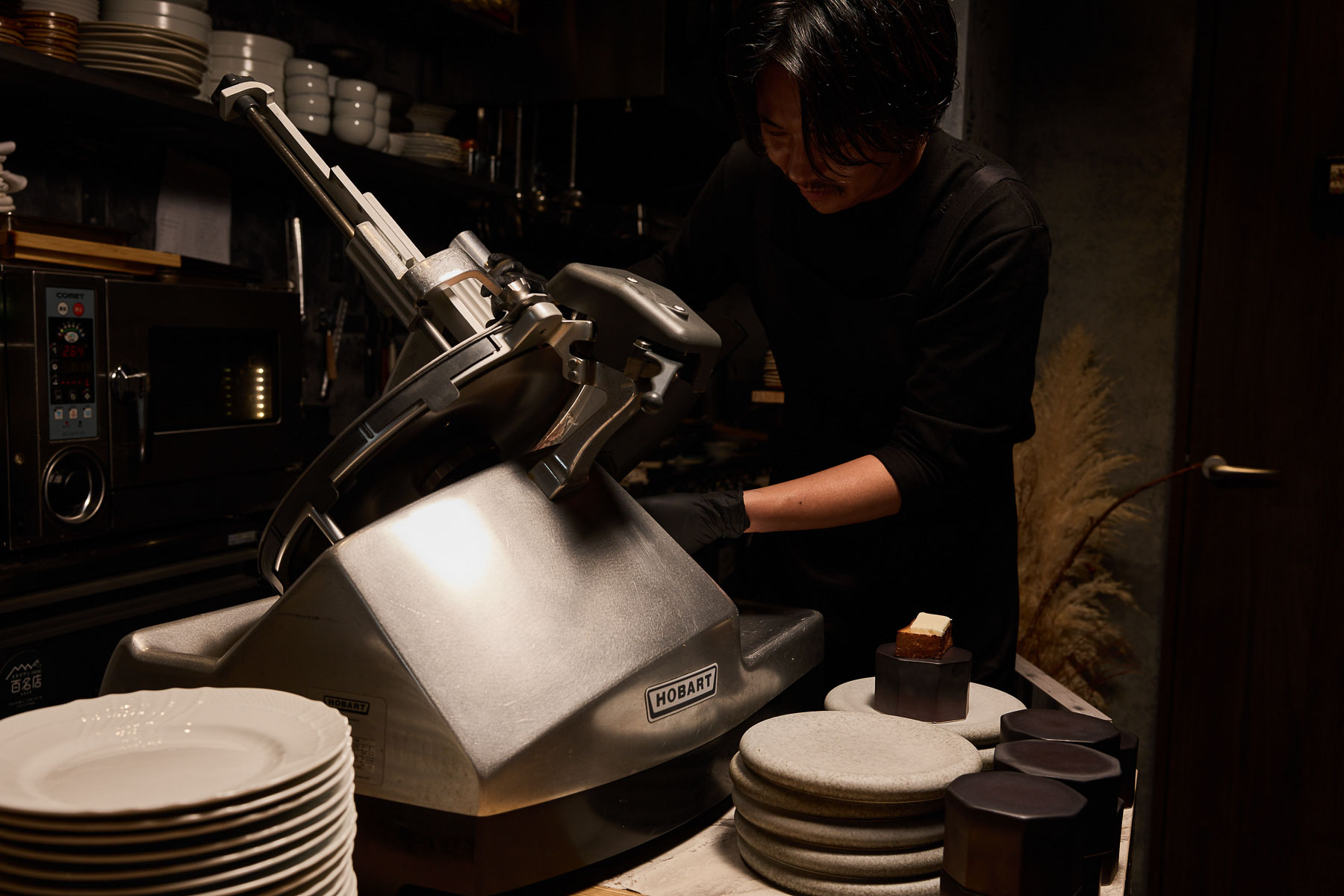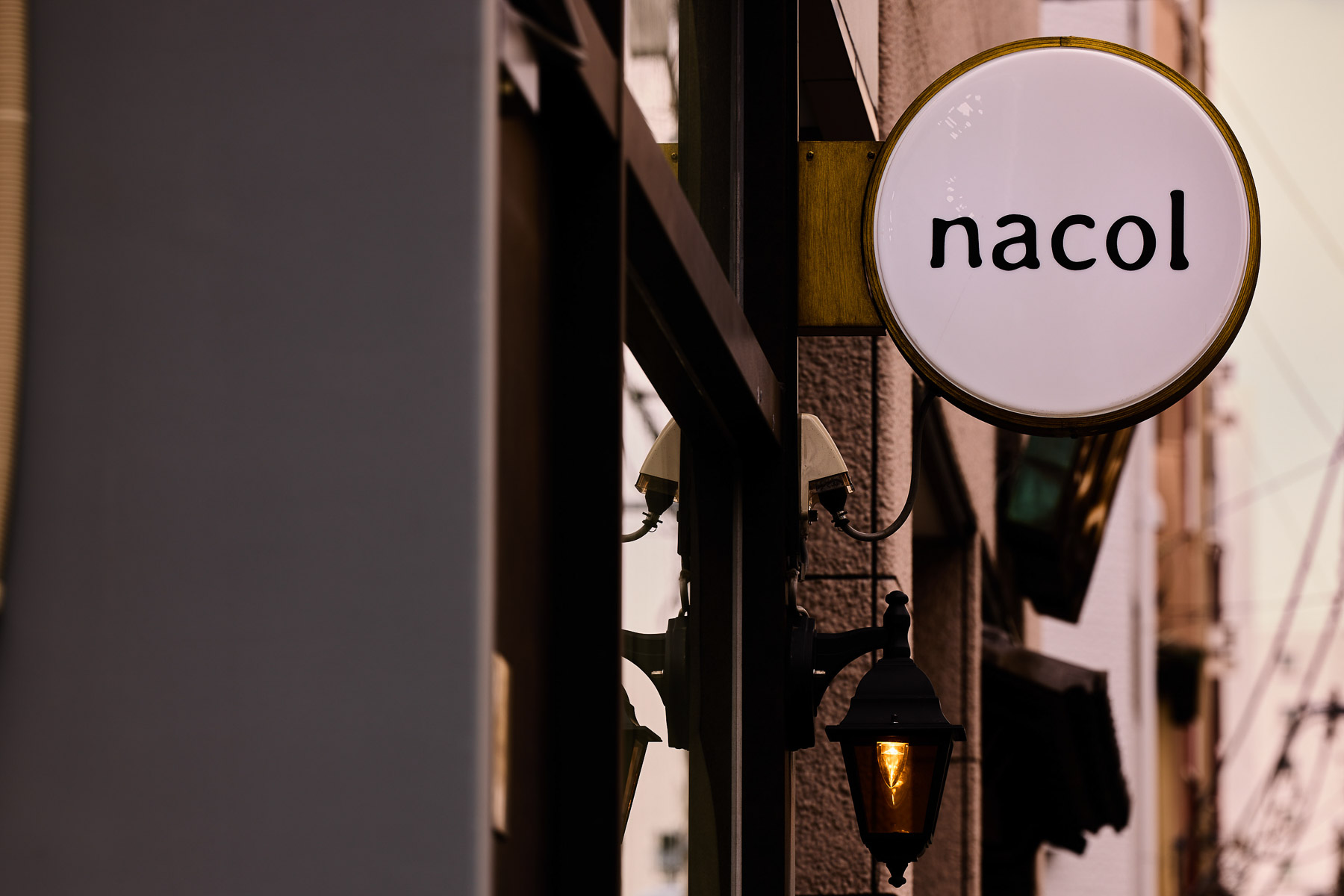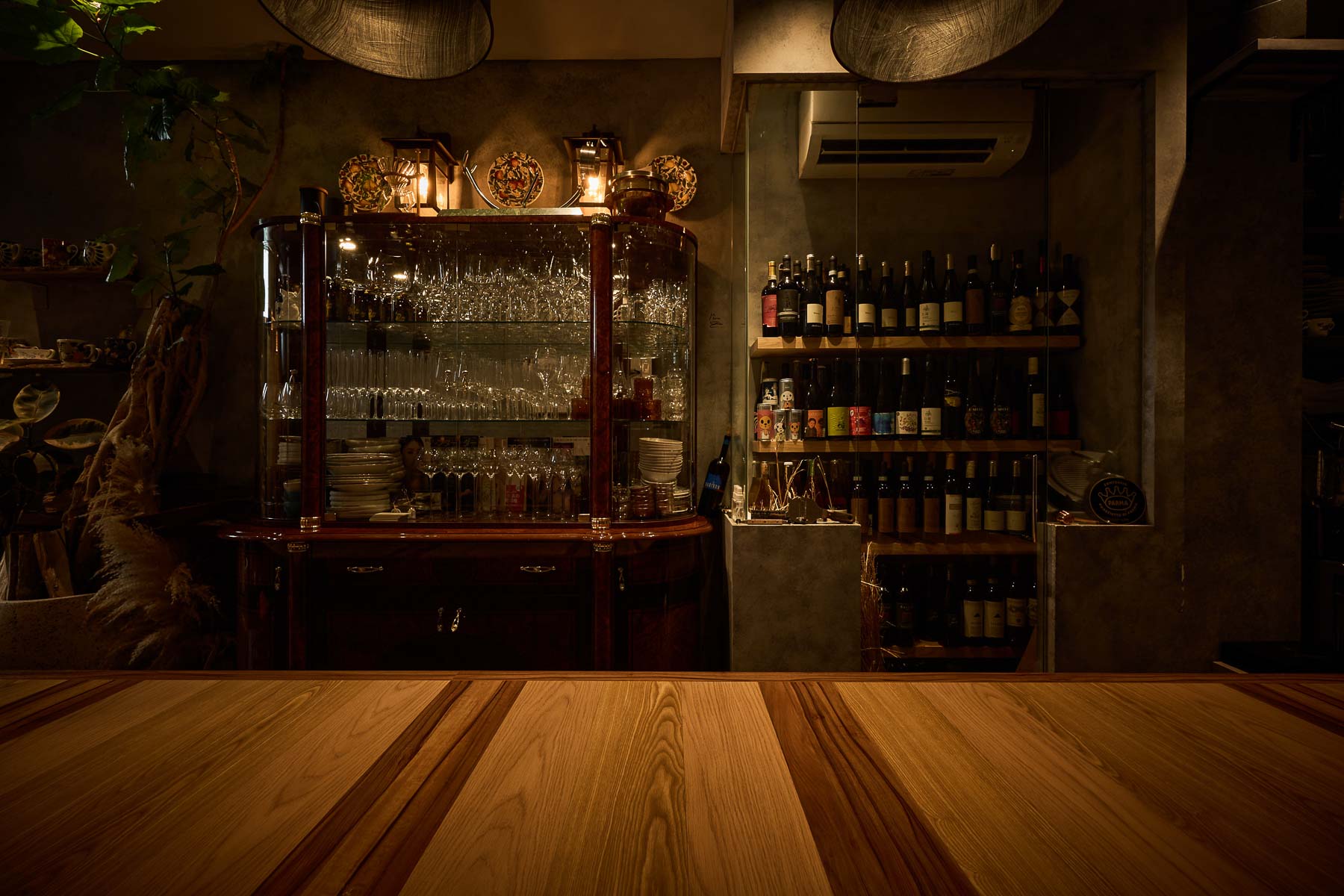
Tokyo
nacol
nacol
Chef Tomohiro Iekame didn’t set out to open a typical Italian restaurant. He opened nacol as an ode to the ingredient he couldn’t stop thinking about: prosciutto. For years, he immersed himself in the world of Italian charcuterie, studying the different varieties and aging techniques. Here, prosciutto is not just a starter or a side note, but a full tasting experience, paired with an excellent wine list.
Opened in April 2024, nacol is tucked away in a quiet backstreet in Asakusa, behind the Kannon temple. The interior feels luxurious yet rustic, with features such as lighting and shelving handmade by Iekame himself. The open kitchen layout creates an inviting atmosphere with a wooden dining table serving as the centerpiece in the room. Above it hangs a striking sumi-e artwork by calligrapher MISAKO, commissioned to echo one of the chef’s signature dishes.
Curated by Iekame, also a sommelier, the built-in wine cellar showcases a wide variety of choices. The wine list is almost entirely Italian, with natural wines making up about 40%. The pairing menu offers delightful combinations of various prosciutto and wines that make the experience at nacol even more memorable.
CUISINE
An ode to the ingredient
At nacol, the omakase course revolves entirely around Iekame’s obsession with prosciutto. The meal begins with a few refined starters, followed by five or more prosciutto dishes including pasta and a grilled dish. Each one explores a different aging method, regional influence or pairing idea.
The Jambon d’Auvergne on brioche is nacol’s signature dish. The crisp and airy brioche is lightly sweetened and custom-baked from Iekame’s own recipe. It’s slathered with cultured butter and crowned with an impossibly thin slice of prosciutto, shaved to precisely 0.03 mm at the counter. It’s a single bite of extraordinary cohesion.
Another standout is the lardo and Densuke conger eel. A sheet of lardo, or cured pork back fat, is draped over a fritter of conger eel. As it arrives at the table, the heat renders the lardo transparent, revealing the fish beneath. Finished with a delicate Japanese pepper aioli, the dish is designed to pair effortlessly with wine.
The zucchini flower dish hides a core of foie gras, and is served with two distinct types of prosciutto: cecina, made from cured beef, and guanciale, from pork cheek. The delicate mix of salt, fat and floral notes makes for a deeply satisfying course.
The meal continues with a pasta dish, often a variation on the Roman classic amatriciana, made with guanciale, dried tomatoes and finished with a grating of pecorino romano. Seasonal herbs or a touch of vinegar are sometimes added for balance, and both portion size and seasoning can be adjusted to the guest’s preferences.
For the main grilled course, guests have the option to choose between Tokyo beef or Ibérico pork, with portion sizes of 30, 60 or 90 grams. The meat is cooked in three stages—over charcoal, wood, and straw—giving it a layered aroma and rich depth of flavor. A sauce made from Madeira wine and fond de veau brings sweetness and complexity to the meat.
Rich and smooth, the chocolate terrine is made with 55% Italian cacao and garnished with fresh cherries. Other dessert options include Italian classics like semifreddo and tiramisu.
INGREDIENTS
Prosciutto, the key ingredient at nacol, is sourced through three trusted importers, allowing Iekame to work with a wide range of exceptional cured meats from niche European producers. Each is selected for its character, age and depth. Among the staples are 21-month-aged Jambon d’Auvergne, aged Spanish Ibérico Bellota and beef-based cecina.
Other ingredients come from carefully chosen producers and regions. Cheese is imported primarily from Italy, with fresh ricotta made in-house. The olive oil is also Italian, chosen for its clarity and finish. Vegetables are sourced from Kyoto’s Tango and Miyazu regions, as well as Ichiro Farm in Toyokawa in Aichi Prefecture.
The beef is Tokyo Beef—Japan’s only wagyu raised within the Tokyo metropolitan area, with fewer than 50 cattle shipped from Hachioji each year. Fish is delivered fresh from Toyosu Market and regional ports including Miyazaki, Akashi and Kyoto.
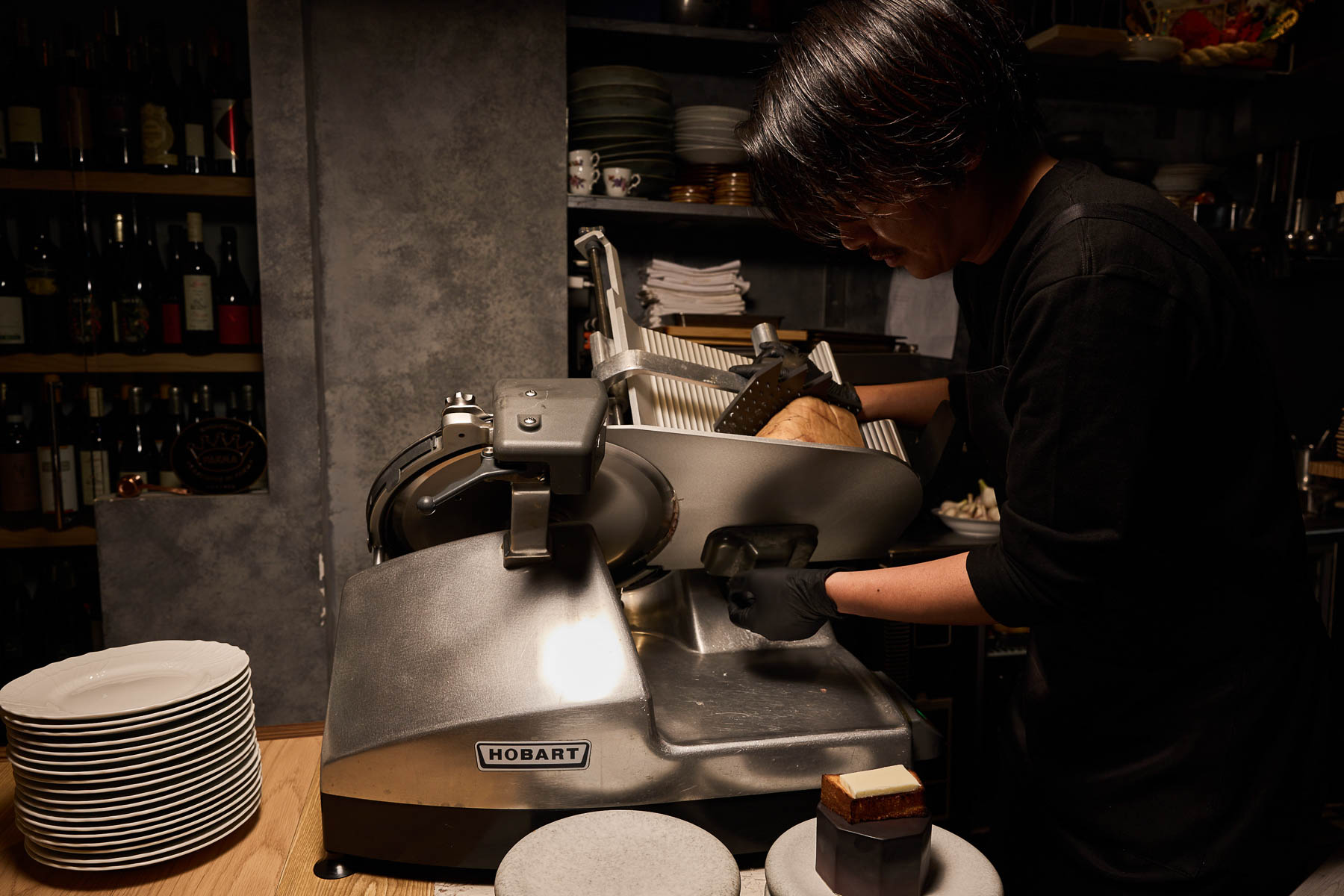
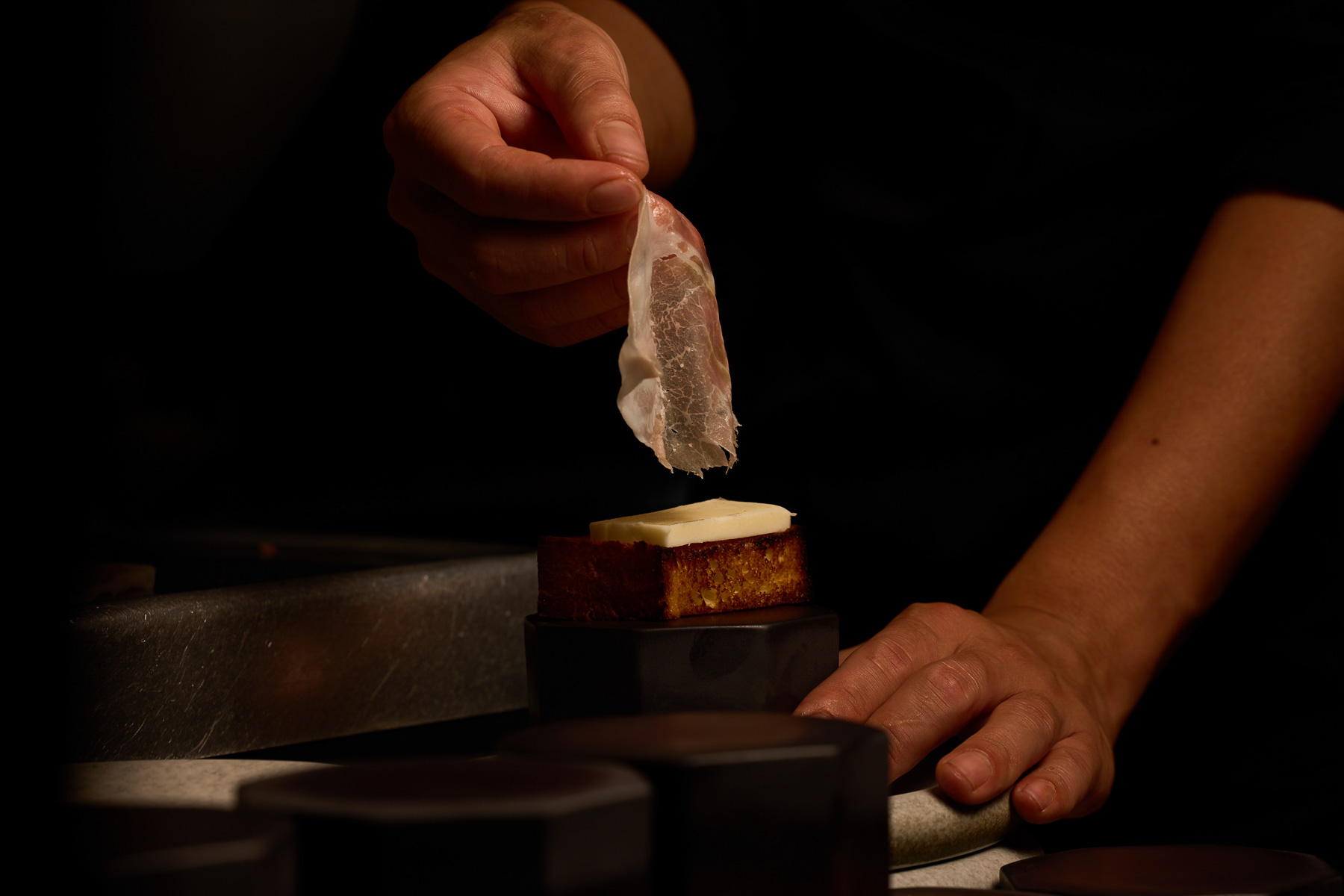
CHEF
Tomohiro Iekame
PROSCIUTTO
Central to Iekame’s philosophy is the belief that prosciutto deserves the same level of recognition as other world-class ingredients. The restaurant stocks several varieties, from Jambon d’Auvergne and Ibérico Bellota to aged cecina. He uses a Hobart slicer—precision equipment favored by charcuterie artisans—that allows him to slice prosciutto to an almost impossibly fine 0.03 mm. Storage is kept at a strict 1–2°C, and even briefly exposed surfaces are retrimmed before serving to ensure freshness. Every detail here reflects the chef’s unwavering devotion to one of Italy’s most treasured ingredients.
Course
- The price includes our booking fee of ¥8,000
- The price includes our booking fee of ¥8,000


